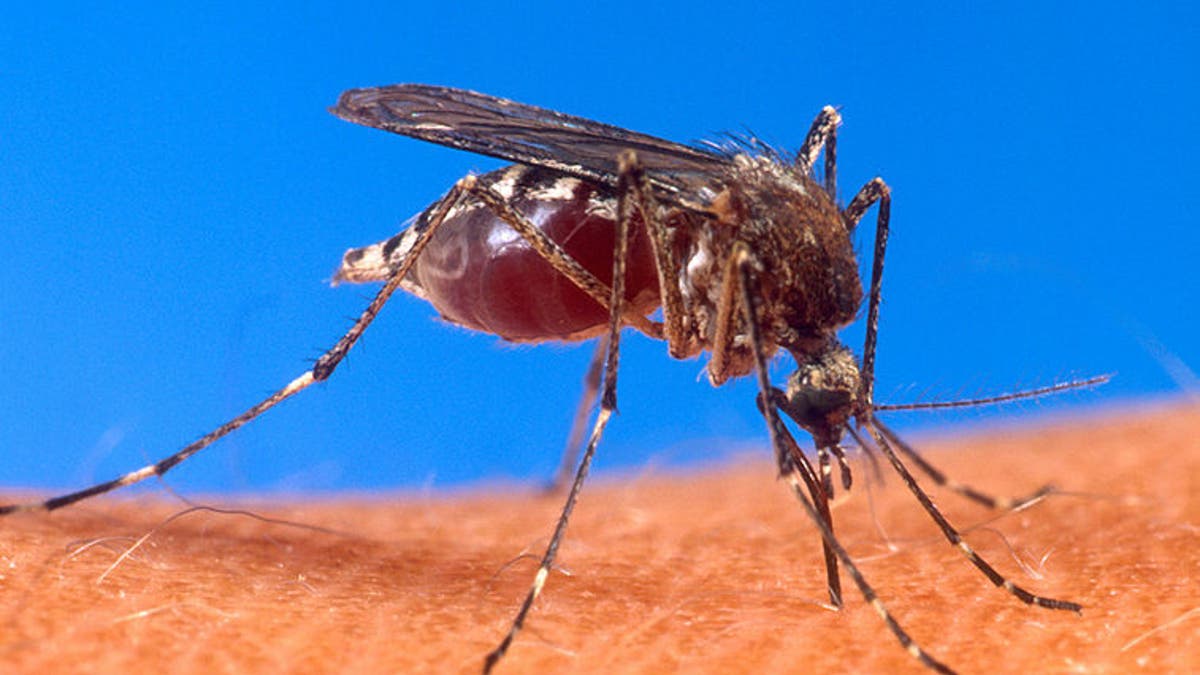
(Wikipedia)
Protect yourself with this guide to outsmarting the biggest buzz kills.
Know Your Enemy
Whether your goal is to avoid or to annihilate, if you want to beat a bug, first you have to think like one. Here, you'll find Real Simple’s expert information on where they lurk, what they love, and how you can exploit their fatal weaknesses.
Mosquitoes
Where they hang out: These chronic outdoor-party crashers can be found near lakes, marshes, lagoons, pools, or any other body of water. (No-see-ums, those barely visible gnats, gravitate to the same soggy places.)
What attracts them: Body heat and moisture, which they need to lay eggs and feed young. “There’s a saying—water plus seven days equals mosquitoes,” says George Hamilton, chair of entomology at Rutgers University, in New Brunswick, New Jersey.
Their kryptonite: Insect repellents that contain DEET work well on individual bugs (see Your Biggest Bug Questions, Answered for more info). To keep swarms away, twice a week empty any standing water in birdbaths and kids’ toys or pet bowls that have been left out in the yard.
What else you need to know: They are at their worst at sunrise and dusk. Notify public-health officers about rain-filled pools on foreclosed properties; they will empty them to prevent the spread of mosquito-borne West Nile virus.
_______________________________________________
More From Real Simple:
How to Treat Bug Bites
Your Biggest Bug Questions, Answered
The Best Insect Repellent Options
______________________________________________
Things That Sting
Where they hang out: There are many kinds of bees, wasps, hornets, and yellow jackets. Their nests can be found in trees or bushes, under the eaves of buildings, or even on the ground. Be careful when walking outside barefoot.
What attracts them: Bees and yellow jackets like sweet things, so don’t leave open soda cans outdoors or they may fly in. Honeybees like the colors of flowers, but they can’t see red (so you’re safe next to the geraniums).
Their kryptonite: The best way not to get stung is to leave them alone. Never swat at one or the whole colony might chase after you for several hundred feet to defend their nest.
What else you need to know: If you are allergic to bee stings, you must carry an EpiPen to prevent anaphylactic shock if you are stung. Even if you are not allergic, your reaction may become more severe with each sting.
Fire Ants
Where they hang out: Originally from South America, fire ants were introduced into the United States in the 1930s. They love warm places and live in mounds, usually in grassy areas, across the southern half of the country.
What attracts them: Omnivores, they eat anything from leaves to baby birds (eek!) and will attack if a nest is threatened. Hundreds will swarm, injecting venom that feels like a burn and that can cause anaphylactic shock to the allergic.
Their kryptonite: There’s no silver bullet when it comes to putting off these pests. Products containing chemicals such as permethrin, bifenthrin, and hydramethylnon only control, rather than destroy, a fire-ant population.
What else you need to know: Some people swear by filling mounds with grits, bleach, or Drano (not so eco-friendly). But unlike most insects, fire ants have many nests. Entomologists say you won’t kill them with these remedies; at best, you’ll make them relocate.
Greenhead Flies
Where they hang out: These biting horseflies develop in coastal marshes in July and August and are especially problematic on Cape Cod and the Jersey Shore, where black wooden box traps are installed on certain beaches to snare them.
What attracts them: They like large, dark objects, probably because their natural food sources are cattle and deer. (But they will bite you when they can’t find Bambi.) Many of their cousins, such as blackflies, have similar feeding habits.
Their kryptonite: The best defense against greenheads is permethrin, which can be found in products such as Permanone. It’s wise to save this for intolerable cases, as it can give skin a rash; spray it on clothes only.
What else you need to know: Greenheads attack during the day. Because they are larger than most insects, greenheads are often not bothered by a normal amount of insect repellent on skin, even if it contains DEET.
Ticks
Where they hang out: The black-legged tick that spreads Lyme disease is common in the Northeast and the upper Midwest, where it hangs out in the woods, looking to feed on the exposed skin of hikers.
What attracts them: They want your blood. Ticks can burrow only their mouth parts into skin, so they secrete a gluelike substance to lock themselves in, hang around for 48 to 72 hours engorging themselves, and then drop off.
Their kryptonite: The best defense is not letting them near skin. In the woods, wear light-colored long pants (tucked into socks), long sleeves, and a hat so ticks are easy to spot. Use repellent with DEET on exposed skin and permethrin on clothes.
What else you need to know: After a walk in the woods, check any exposed skin for ticks; they are tiny enough to get through socks, so also inspect feet. If you do find one, remove it slowly with a tweezer. See a doctor if you develop a bull’s-eye–shaped rash or flu-like symptoms.
